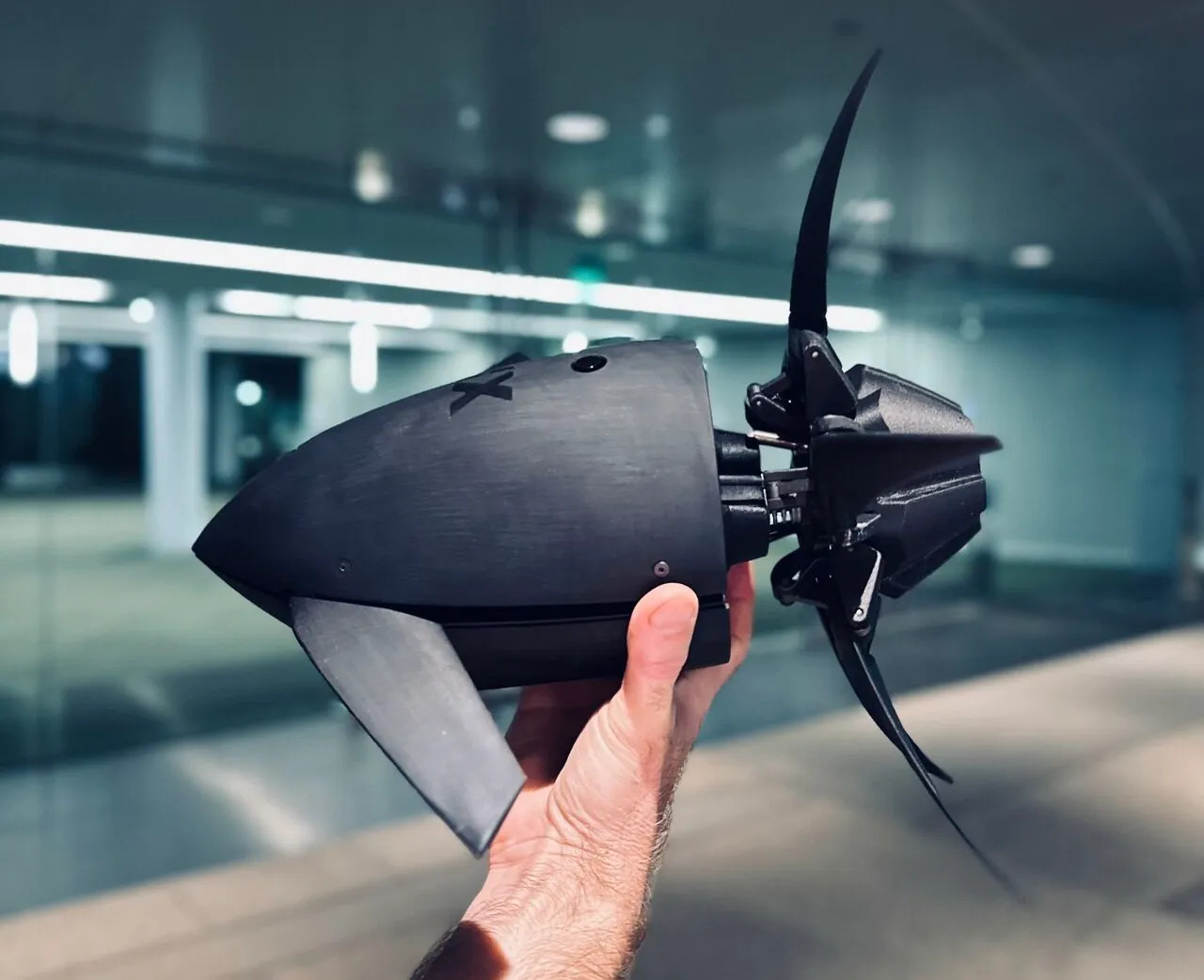
The U.S. startup XDOWN has revealed new details on the PS Killer (PSK) tactical Unmanned Aerial System (UAS), a cutting-edge loitering munition.
With a “throw-and-forget” deployment system, advanced thrust vectoring for high agility, and stealth capabilities, the PS Killer is set to redefine autonomous strike missions and reconnaissance operations.
The PS Killer’s modular design allows for flexibility in combat roles, supporting intelligence, surveillance, and reconnaissance (ISR), electronic warfare (EW), and counter-unmanned aerial system (C-UAS) operations. It also serves as a precision strike weapon against high-value targets (HVTs), making it a versatile asset for military forces worldwide.
The PS Killer’s design is built for maximum efficiency and adaptability, employing a reinforced carbon fiber structure and a compact NFL-sized football shape for easy deployment. Its ultra-low radar cross-section (RCS) and acoustic suppression systems ensure stealth capabilities, making it difficult to detect and intercept.
With a cruising speed of 100 knots and a top speed exceeding 135 knots, the PSK delivers rapid engagement, while its scalable swarming capabilities enable synchronized attacks on multiple targets. The system integrates real-time data exchange with command-and-control units, enhancing situational awareness and coordination.
The PSK is engineered for high-impact, non-line-of-sight (NLOS) precision strikes, reducing collateral damage while maintaining maximum lethality against armored targets and enemy personnel.
Beyond its offensive capabilities, the PSK’s counter-drone function is a game-changer in C-UAS operations, featuring serial ramming technology that neutralizes multiple aerial threats with a single launch. This feature ensures uninterrupted battlefield dominance in contested environments.
The system is also equipped with advanced thermal imaging sensors, enabling effective operations in low-light and low-visibility conditions. This enhances its ISR applications, providing real-time intelligence gathering and reconnaissance capabilities for frontline forces.

Source: Defence Blog

